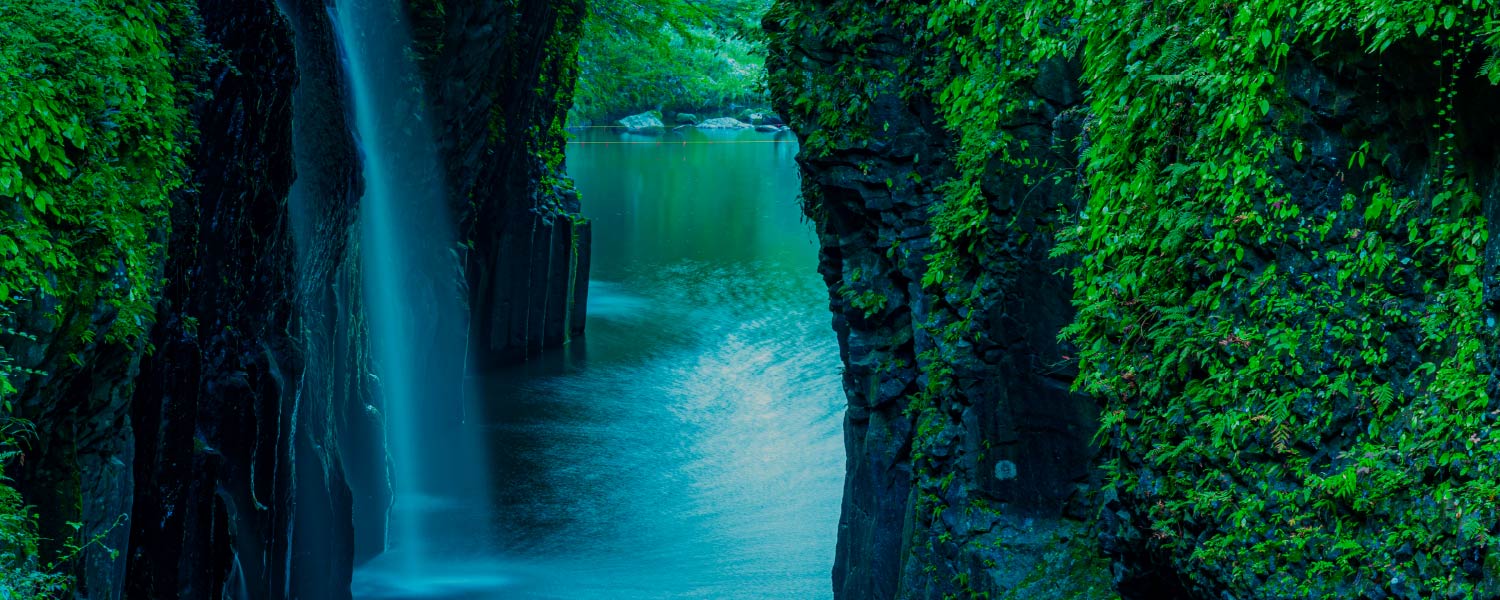Miyazaki Prefecture is located in southeast Kyushu, known for its warm and sunny climate. The western, inland region is mountainous, housing Mt. Sobo in the north and Kirishima mountain range in the south. High-quality spring water flows from the mountains through the Miyazaki Plain towards the ocean. The eastern coastline stretches 405 km from north to south, housing fishing ports and beautiful beaches popular for tourist destinations.
Miyazaki is known for hosting training camps for various professional sports teams and attracting both domestic and international sports events. It is also a popular tourist destination rich with nature, from the sparkling Nichinan coast to the scenic Takachiho Gorge. Highlights of historical spots include a cave where the goddess, Amaterasu Omikami is believed to have hidden in Japanese mythology and the 1000-year-old Aoshima Shrine. As a shochu producer, Miyazaki boasts the largest production volume and an extensive variety of shochu in Japan.













